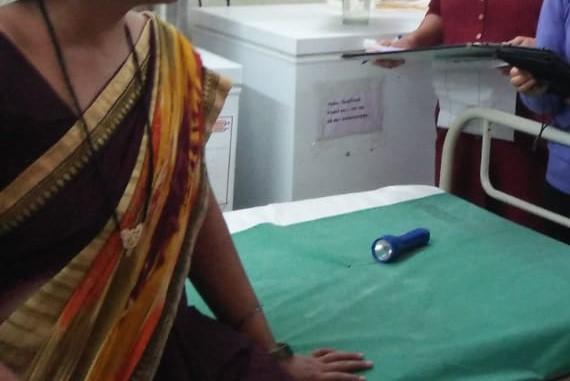Having the right atmosphere, tools, and staff is one of the most important steps in showing your patients that you care. Read on to find out some obvious-sounding but often-missed ways to achieve this.
Gynaecologist’s Guide – Part 3: Equipping the OPD for a PV Exam
Fine, so you identified the women, you counseled them to undergo a pelvic exam. What next? If you start preparing for the exam at the last minute, you not only end up spending your and the waiting patients’ time, but you also reduce the chances of a wow experience for the patient. Remember that the experience is what builds trust and rapport of the doctor with the patient. We saw in the last article in this series how communications play a key role in the increasing the success rate of your cervical health practice. Equally important is the way you equip your OPD for the seemingly mundane pelvic exam. Let’s see how.
Guidelines for the OPD exam room:
First of all, remember that the patient is under tremendous mental pressure when she is getting ready for a pelvic exam. For you, a doctor, this may be a normal matter however for the patient, it amounts to lowering her guard. So she needs to know that she can trust you and your entire team with her modesty. Review the physical premises of your OPD against the following simple guidelines today – or better still, have a female friend visit and give you a feedback.

- Ensure that the examination room is private, curtained, and in an accessible part of the clinic. One has to take care of visual as well as auditory privacy.
- Ensure that the exam area is clean, well-lit (read sunlight or white light), and comfortable, with clean modesty covers available
Preparing in advance:

Secondly, once the patient is brought to the exam room, she expects you to treat her with caution and care. The following points will ensure just that:
- Use a sterile Cusco’s speculum for every patient. Ensure that you invest in a good number of stainless steel specula of medium and large sizes. Hey, size matters! Also invest in an autoclave. However, if electricity is an issue in your locality, stock 5-6 additional specula.
- Ensure that the nurse/examining auxiliary nurse mid-wife is well-trained to use the Cusco’s speculum. Mistake in inserting the speculum, expanding it in the wrong position or depth can give the patient an unpleasant experience, thus jeopardizing the whole initiative.
- Use soft, large head cotton swabs. You can make them yourselves using surgical cotton and polished bamboo sticks from a craft store. Alternatively, if time and hassle is to be saved, you can use the Smart Scope® Disposables kit.
- Ensure that you have the case paper details such as medical history, and gynac history noted down. Women often do not provide accurate dates of menstruation or pregnancy; ask them the right questions to extract the correct dates. If you have a digital record system such as Net4Medix® app that comes with the Smart Scope®, ensure that you keep the patient record ready with the basic data before you start the exam.
- If you are using the Smart Scope®, ensure that the probe is covered properly with disposable sheath.
Taking some simple measures that tell the patient she is in safe hands goes a long way in building trust. Demonstrating the quality of care with use of safe tools, trained staff, careful record keeping, and maintaining her comfort at all times is essential in a successful cervical health practice.
In our next article in this series, we delve deeper into the actual procedure of a cervical health exam and post-exam counseling.


One reply on “Gynaecologist’s Guide – Part 3: Equipping the OPD for a cervical health exam”
nice info……